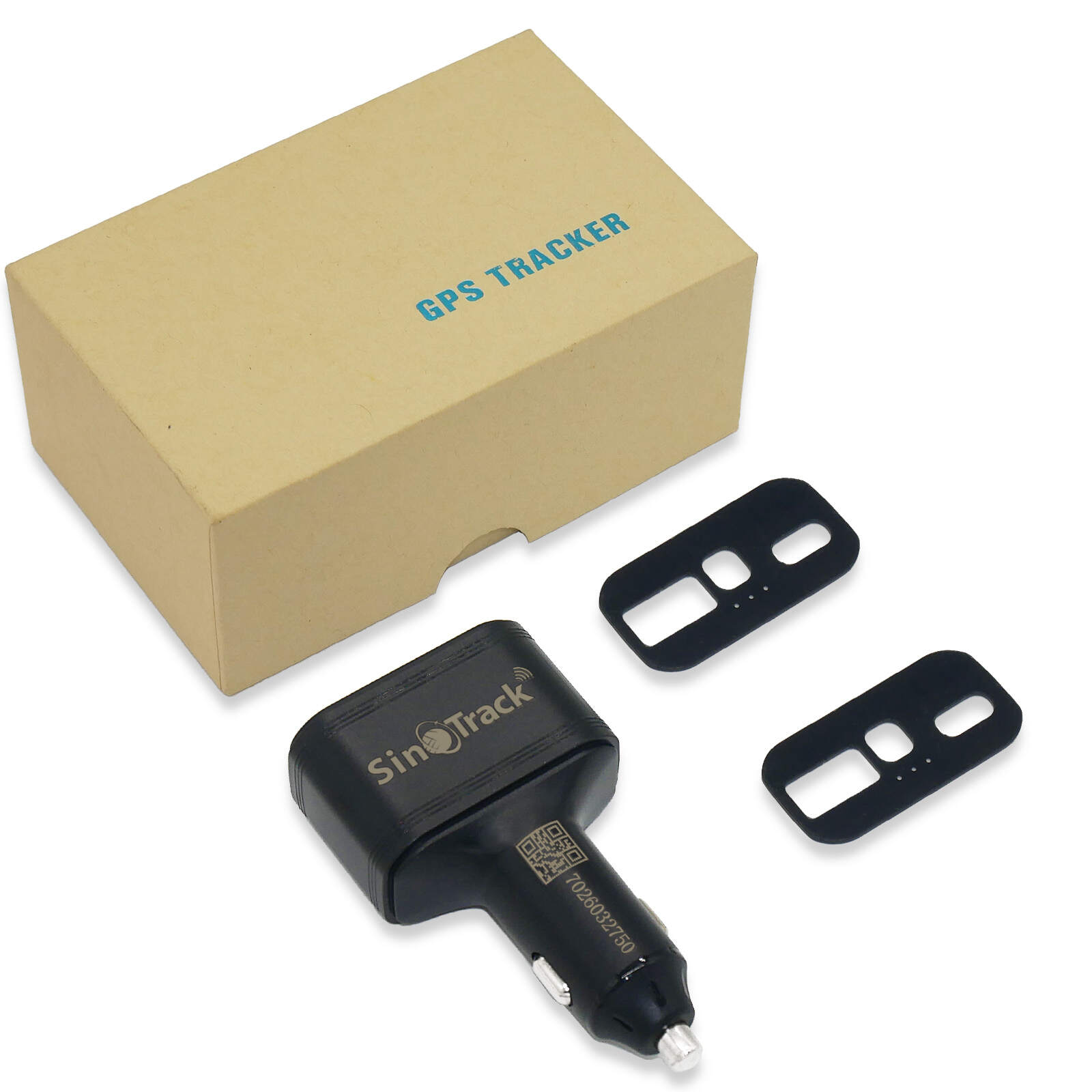The typical battery life of personal GPS trackers varies widely based on the device and how you use it. Most trackers last 1 to 3 days under normal conditions. Some advanced models, like the Spytec GPS Max, can operate for up to 12 months without recharging. Others, such as the iTrail Endurance, provide up to 100 days of tracking. Understanding these differences helps you select a tracker that fits your needs. Knowing what affects battery performance also allows you to get the most out of your device.
How long does the battery of a personal GPS tracker typically last?
The battery life of personal GPS trackers varies depending on the type of device and its intended use. Understanding these differences helps you choose the right tracker for your needs. Below, we explore the typical battery life of different types of GPS trackers and provide examples of popular models.
Battery life ranges for different types of GPS trackers
Wearable GPS trackers (e.g., for kids or pets)
Wearable GPS trackers, designed for portability and comfort, often have smaller batteries. These devices usually last between 1 to 3 days under normal usage. The frequent location updates required for real-time tracking can drain the battery faster. If you use a wearable tracker for your child or pet, you may need to recharge it daily or every other day.
Portable GPS trackers (e.g., for vehicles or belongings)
Portable GPS trackers, used for tracking vehicles or valuable items, typically offer longer battery life than wearables. These devices can last anywhere from a few days to several weeks, depending on the update frequency and battery capacity. For example, if you set the tracker to update its location less frequently, you can extend its battery life significantly.
Long-term GPS trackers (e.g., for remote monitoring)
Long-term GPS trackers are designed for extended use without frequent recharging. These devices often feature larger batteries and advanced power-saving modes. Some models, like the Spytec GPS Max, can last up to 12 months. Others, such as the iTrail Endurance, can operate for up to 100 days. These trackers are ideal for remote monitoring or situations where regular charging is inconvenient.
Examples of battery life for popular GPS tracker models
Short-term trackers with high-frequency updates
Short-term GPS trackers prioritize real-time tracking and frequent updates. These features consume more power, resulting in shorter battery life. For instance, some compact trackers designed for personal use may last only a few hours to a day when set to update every few seconds. If you need constant updates, you should expect to recharge the device frequently.
Long-term trackers with low-frequency updates
Long-term GPS trackers focus on efficiency and longevity. By reducing the frequency of location updates, these devices conserve battery power. Models like the EverLast Nano can achieve up to 140 days of battery life with extended battery options. These trackers are perfect for monitoring assets or vehicles over long periods without needing constant attention.
What factors influence the battery life of personal GPS trackers?
The battery life of personal GPS trackers depends on several factors. Understanding these factors helps you make informed decisions about using your device effectively. Below, we explore the key elements that impact the typical battery life of GPS trackers.
Frequency of location updates
The frequency of location updates plays a significant role in determining battery life. When your GPS tracker sends updates more often, it consumes more power. For example, real-time tracking, which provides updates every few seconds, drains the battery quickly. On the other hand, setting the device to update less frequently, such as every few minutes or hours, conserves energy. Adjusting the update interval based on your needs can help you extend the battery life of your tracker.
GPS tracker features and settings
The features and settings of your GPS tracker also influence its battery performance. Some features require more power, while others can be adjusted to save energy.
Real-time tracking vs. periodic updates
Real-time tracking offers constant updates, which is useful for monitoring movement closely. However, this feature uses more battery power. Periodic updates, where the tracker sends location data at set intervals, consume less energy. Choosing periodic updates when real-time tracking is unnecessary can help you preserve battery life.
Additional features like geofencing or SOS alerts
Many GPS trackers include advanced features like geofencing and SOS alerts. Geofencing creates virtual boundaries and sends notifications when the tracker crosses them. SOS alerts provide emergency signals when activated. While these features enhance functionality, they also increase power consumption. Disabling features you don’t need can reduce battery usage and extend the device’s operating time.
Environmental factors
Environmental conditions can significantly affect the battery life of your GPS tracker. External factors often influence how efficiently the device operates.
Signal strength and GPS coverage
Weak signal strength forces the tracker to work harder to maintain a connection, which drains the battery faster. Areas with poor GPS coverage, such as dense forests or urban environments with tall buildings, can also impact battery performance. Using the tracker in locations with strong signal strength helps conserve energy.
Temperature and weather conditions
Extreme temperatures, whether hot or cold, can reduce battery efficiency. Cold weather, in particular, can cause the battery to drain faster. Similarly, harsh weather conditions may affect the device’s performance. Keeping the tracker within its recommended temperature range ensures optimal battery life.
Battery capacity and device design
The battery capacity and design of your GPS tracker play a crucial role in determining how long it can operate before needing a recharge. These factors directly impact the device's performance and usability.
Battery Capacity
Battery capacity, measured in milliampere-hours (mAh), indicates how much energy the battery can store. A higher mAh rating means the battery can last longer. For example, a GPS tracker with a 10,000 mAh battery will typically outlast one with a 1,000 mAh battery under similar usage conditions. When choosing a tracker, you should consider how often you plan to use it and for what purpose. Devices with larger batteries are ideal for long-term tracking, while smaller batteries work well for short-term or lightweight applications.
Device Design
The design of the GPS tracker also affects its battery life. Compact trackers often have smaller batteries due to space limitations. While these devices are portable and convenient, they may require frequent recharging. On the other hand, larger trackers can accommodate bigger batteries, offering extended usage times.
Some trackers include energy-efficient components or advanced power management systems. These features help conserve battery life without compromising performance. For instance, trackers with motion sensors can enter a low-power mode when stationary, saving energy until movement resumes.
Balancing Size and Functionality
When selecting a GPS tracker, you should balance size and functionality. A smaller device may be easier to carry but could have limited battery life. Conversely, a larger tracker might offer more extended usage but could be less portable. Assess your specific needs to find a device that aligns with your priorities.
Understanding battery capacity and device design helps you make informed decisions. By choosing a tracker that matches your requirements, you can ensure reliable performance and longer battery life.
How can users maximize the battery life of their GPS trackers?
Maximizing the battery life of your GPS tracker ensures reliable performance and reduces the need for frequent recharging. By making small adjustments to settings, following proper charging practices, and selecting the right device, you can extend the typical battery life of your tracker.
Adjusting device settings
The settings on your GPS tracker play a significant role in how long the battery lasts. Optimizing these settings can help you conserve energy.
Reducing update frequency
Frequent location updates consume more power. If you don’t need real-time tracking, adjust the update interval to a longer duration. For example, setting updates to occur every 10 minutes instead of every few seconds can significantly extend the battery life. This adjustment is especially useful for long-term tracking needs.
Disabling unnecessary features
Many GPS trackers come with additional features like geofencing, SOS alerts, or motion detection. While these features enhance functionality, they also drain the battery faster. Turn off features that you don’t use regularly. For instance, if you don’t need geofencing notifications, disabling this feature can save energy and prolong the device’s operating time.
Charging and maintenance tips
Proper charging habits and maintenance practices can also help you get the most out of your GPS tracker’s battery.
Regularly charging the device
Charge your GPS tracker before the battery level drops too low. Keeping the battery charged between 20% and 80% helps maintain its health over time. Avoid letting the battery completely drain, as this can reduce its overall lifespan.
Avoiding overcharging or deep discharges
Overcharging the battery or allowing it to discharge completely can harm its performance. Unplug the device once it reaches full charge. If your tracker has a power-saving mode, use it to prevent unnecessary battery drain when the device is not in use.
Choosing the right tracker for your needs
Selecting a GPS tracker that aligns with your specific requirements can make a big difference in battery performance.
Opting for a tracker with a suitable battery life
Consider how you plan to use the tracker. If you need it for short-term tracking, a device with a smaller battery may suffice. For long-term monitoring, choose a tracker with a larger battery capacity or extended battery options. Understanding the typical battery life of different models helps you make an informed decision.
Considering power-saving modes or external battery packs
Some GPS trackers include power-saving modes that reduce energy consumption when the device is stationary. Enable these modes to conserve battery life. Additionally, external battery packs can provide extra power when you’re unable to recharge the device. These accessories are especially helpful for outdoor activities or remote monitoring.
By following these tips, you can maximize the battery life of your GPS tracker. Adjusting settings, maintaining proper charging habits, and choosing the right device ensure that your tracker remains reliable and efficient.
The typical battery life of personal GPS trackers depends on the device and how you use it. Some trackers last only a few hours, while others can operate for months. Factors like update frequency, features, and environmental conditions directly affect battery performance. You can extend battery life by adjusting settings, maintaining proper charging habits, and choosing a tracker that fits your needs. These steps ensure reliable tracking and help you get the most out of your device.

